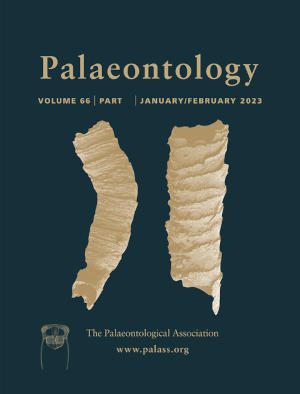Article: Decoding the drivers of deep-time wetland biodiversity: insights from an early Permian tropical lake ecosystem
Publication: Palaeontology
Volume:
66
Part:
3
Publication Date:
2023
Article number:
e12652
Author(s):
Steffen Trümper, Björn Vogel, Sebastian Germann, Ralf Werneburg, Joerg W. Schneider, Alexandra Hellwig, Ulf Linnemann, Mandy Hofmann, and Ronny Rößler
Abstract
Abstract Wetlands are important to continental evolution, providing both arenas and refugia for emerging and declining biotas. This significance and the high preservation potential make the resulting fossiliferous deposits essential for our understanding of past and future biodiversity. We reconstruct the trophic structure and age of the early Permian Manebach Lake ecosystem, Germany, a thriving wetland at a time when the tropical biosphere faced profound upheaval in the peaking Late Palaeozoic Icehouse. Nine excavations, high-resolution spatiotemporal documentation of fossils and strata, and U–Pb radioisotopic dating of tuffs allow us to distinguish autogenic and allogenic factors shaping the limnic biocoenosis. The Manebach Lake was an exorheic, oxygen-stratified, perennial water body on the 101–102 km2 scale, integrated into the catchment draining much of the European Variscides. Lake formation paralleled an Asselian regional wet climatic interval and benefited from rising base level due to post-Variscan half-graben tectonics. Stromatolite-forming cyanobacteria, bivalves, several crustaceans, amblypterids and xenacanthid sharks formed a differentiated biocoenosis in the lake. Fossil stomach remains and teeth prove the rare presence of acanthodians, branchiosaurs and large amphibians. The results indicate woody-debris-bearing lake littorals devoid of semi-aquatic and aquatic plants as places suitable for stromatolites to grow, underpin the model of declining freshwater-shark diversity in most Permian Variscan basins, demonstrate fish/amphibian ratios in limnic assemblages to measure lake perenniality and reveal taphonomic biases in lake taphocoenoses. Our outcomes call for more knowledge about the diversity, ecology and fossilization pathways of past limnic biotas, particularly microorganisms and actinopterygian fishes, to reconstruct deep-time continental ecosystems.
